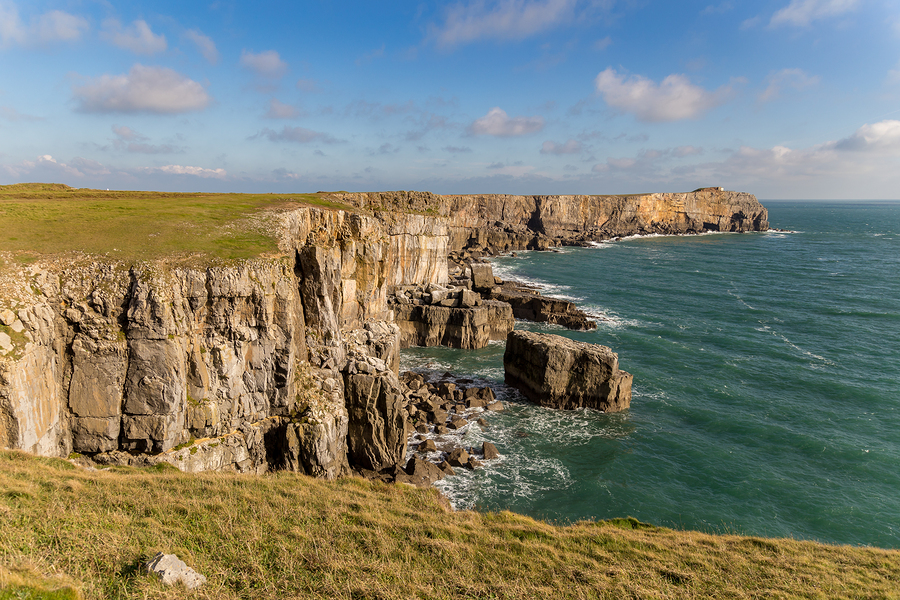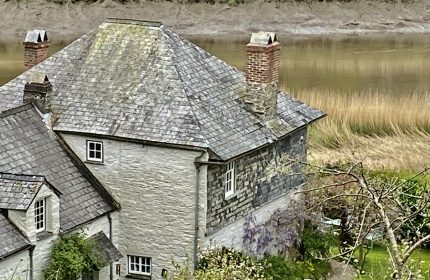A dozen or so things you never knew about Pembrokeshire
The fifth in our series of 'I never knew that about the beauty spots of Britain'
Britain is the most beautiful country in the world when the sun shines. And even when it doesn’t there are myriad tales and facts galore to enhance the beauty, whatever the weather. Here are some of them – they may make you want to go there….
A dozen or so things you never knew about…
Pembrokeshire
A small but scenically beautiful county in the far south west of Wales, Pembrokeshire is particularly noted for its coastline. Nearly half of the county falls within the Pembrokeshire Coast National Park established in 1952 as Britain’s smallest national park and the only national park designated purely for its coastline.
- Pembrokeshire is noted for its offshore islands which are a haven for birds. Skokholm was Britain’s first officially designated bird reserve and site of Britain’s first bird observatory, set up by a young naturalist called Ronald Lockley in 1933. Along with the neighbouring island of Skomer, Skokholm has the largest puffin colony in Southern Britain and the largest concentration of Manx-Shearwaters in the world. Grassholm boasts the fourth largest gannetry in the world and St Margaret’s Island has the largest colony of cormorants in Britain.
- St David’s, the most westerly village in Wales, is the smallest cathedral city in the world. Because of its remote and inaccessible location Pope Calixtus II declared two pilgrimages to St David’s to be worth one to Rome.
- St David’s 12th century cathedral, with its rough and ready grandeur and its locally hewn stone flecked with green lichens, is considered by many to be the most beautiful cathedral in the world. Tucked away in a hollow it all seems slightly crooked and indeed the floor is uneven and some of the pillars lean outward as a result of an earthquake in 1248. Buried in the cathedral is Edmund Tudor, son of Henry V’s widow Catherine de Valois, half brother to Henry VI and father of Henry VII.
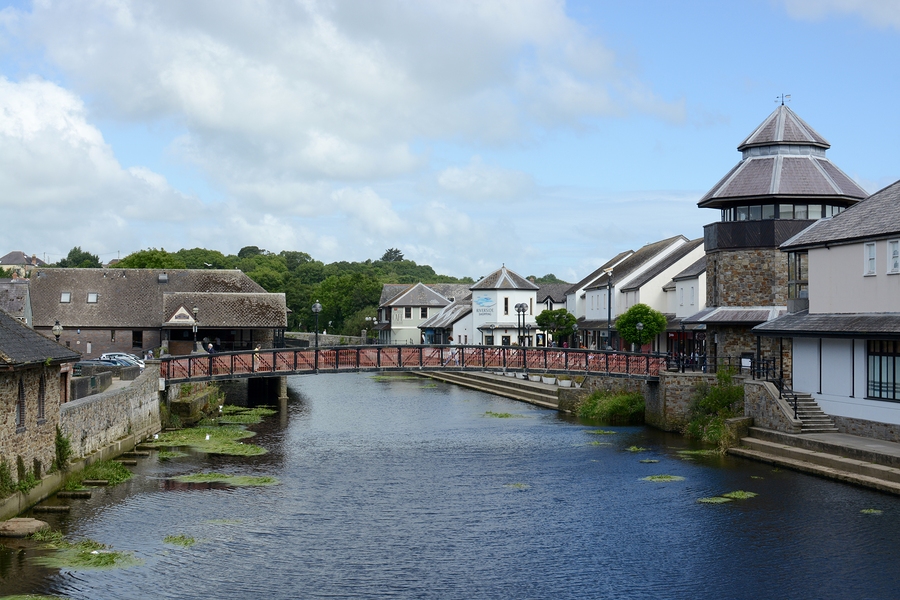
The market town of Haverfordwest, Pembrokeshire, Wales, UK
- The steep high street of Haverfordwest, the county town, leading up to a Norman castle and lined with attractive buildings of all ages, is sometimes called the handsomest street in Wales. The castle contains the town museum where pride of place goes to Wales’s oldest pillar box dating from 1857.
- It is said that on market day in Haverfordwest, you can hear Welsh spoken on one side of the high street, English on the other side and a mixture of the two in the middle. This is because Haverfordwest sits on an invisible but very real boundary line called the Landsker, which divides Welsh-speaking north Pembrokshire from English-speaking south Pembrokeshire. The latter, for historic reasons, is culturally and linguistically English, despite being cut off from England, and is commonly known as ‘Little England beyond Wales’.
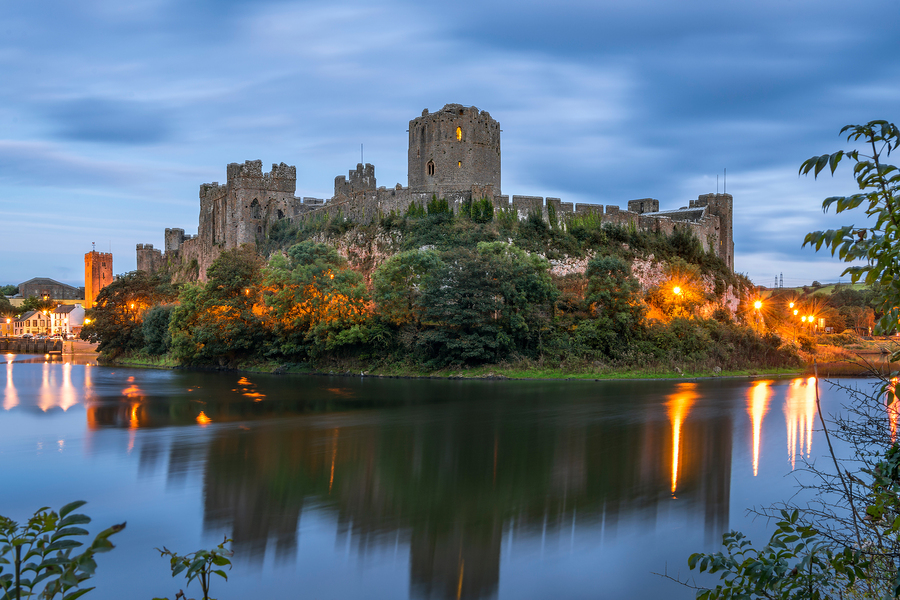
Panoramic view of Pembroke Castle in South Wales at night
- Pembroke Castle was the birthplace in 1457 of Henry VII, founder of the royal house of Tudor. It is the only castle in Britain built above a natural cavern, known as the Wogan.
- Milford Haven, founded by Sir William Hamilton in 1790, sits by one of the largest natural harbours in the world. Despite his wife Emma being Lord Nelson’s mistress, Hamilton asked Nelson to come to Milford Haven in 1802 to help publicise the new port, and the popular admiral did him proud, describing Milford Haven as ‘the finest port in Christendom’.
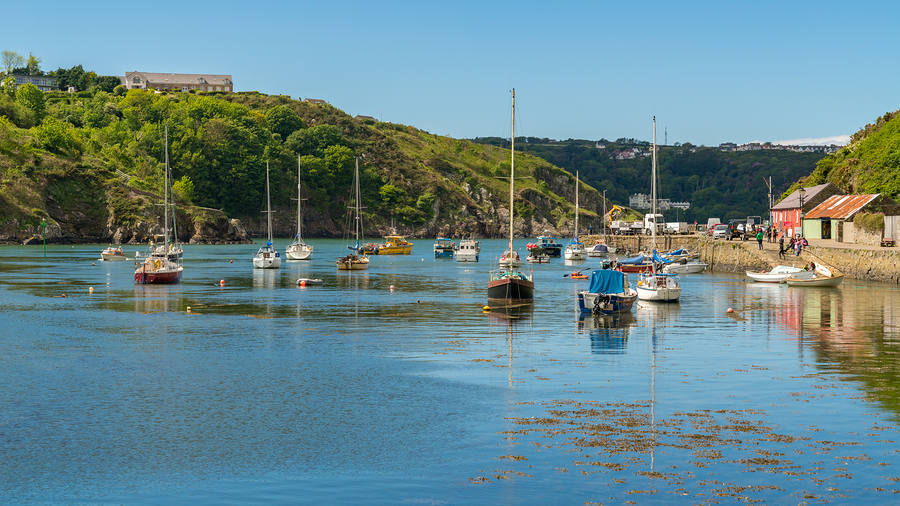
Fishguard, Pembrokeshire, Wales, UK
- In 1797 the small port of Fishguard was the scene of the last foreign invasion of England. Hoping to inspire a revolution in Wales similar to that happening in France a small force of French soldiers under the command of a 70-year-old Irish American called Colonel Tate landed and commandeered a farmhouse as their headquarters. When an unexpectedly large army of redcoats was spotted advancing on the farm, Tate and his men retreated to the beach and surrendered to the local militia, only then discovering that the ‘redcoats’ were in fact the women of Fishguard dressed up in red petticoats and armed with pitchforks.
- The picturesque Preseli Hills are the source of the bluestones that make up Stonehenge in Wiltshire and possibly of the ‘King’. In the 19th century a family from the Preseli Hills emigrated to North America where they were known as the ‘people from Preseli’, or Presleys. Some time later their descendants decided to name one of their children after a Welsh saint from their homeland who has a chapel dedicated to him near St Davids. The saint’s name? St Elvis. Plausible? The people of Pembrokeshire like to think so…
See part three – The Peak District
Find out more about Christopher Winn’s ‘I Never Knew That’ here
Latest posts by Christopher Winn (see all)
- A dozen or so things you never knew about Loch Lomond and Dunbartonshire - October 20, 2021
- A dozen or so things you never knew about Bedfordshire - May 18, 2021
- A dozen or so things you never knew about Berwickshire - March 18, 2021
- A dozen or so things you never knew about The Surrey Hills - January 26, 2021
- A dozen or so things you never knew about historic Monmouthshire - February 10, 2020








